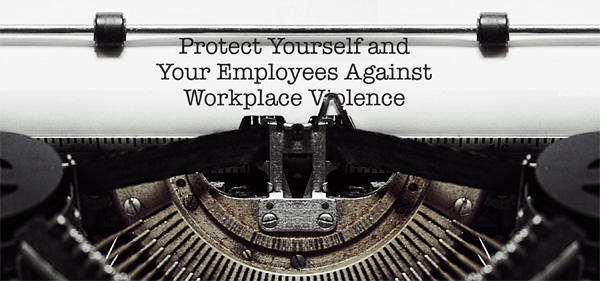
All one needs to do, sadly, is to watch the evening news to realize the prevalence of workplace violence in the United States. According to the FBI, more than two million workers become workplace violence victims each year – ranging from verbal bullying to homicide – with the vast majority of incidents being unreported either out of embarrassment, fear of retaliation, or simply because the employees do not know they should report an incident. According to the U.S. Bureau of Labor Statistics, 70 percent of U.S. workplaces have no formal program covering workplace violence; and only four percent of workplaces actually provide workplace violence-related training.
While neither federal law nor specific state laws require a workplace violence prevention program, the federal Occupational Safety and Health Administration (OSHA) and its state analogs mandate employers to provide a workplace free of “known health and safety hazards,” which easily applies to workplace violence incidents. Many states are actively working on legislating a requirement, and a very good argument can be made right now that it is negligent for employers not to have such programs in place. It is also equally important to make sure that the program applies to the workplace and that employees are properly trained on how to implement and administer it. A policy downloaded from the internet that no one reads is arguably worse than having no policy at all.
The fundamental components of a comprehensive workplace violence prevention program include:
- Background checks on all applicants, but only convictions can be considered. You cannot have a blanket prohibition on anyone with a conviction, and there are dozens of state-specific laws governing certain types of convictions, such as possession of small amounts of marijuana;
- Employee monitoring to spot problems before they arise. Keep in mind that serious privacy concerns come into play with workplace cameras, reading emails and monitoring employees off-duty;
- Employee training to provide necessary information, such as making sure employees who obtain restraining orders let their employer know that the workplace is covered by the order;
- Proper investigations of workplace incidents to reasonably prevent discrimination, including harassment and bullying, from occurring in the workplace;
- Consistent, effective discipline that reduces the threat of future incidents from the same person. Termination may be the right decision but it also may encourage violent behavior in response;
- Routine training and drills to ensure that all employees know what they are supposed to do. For example, “run, hide or fight” is fine – but run where, hide how and fight who?
To get started on an effective policy, perhaps an important first step is to retain a high-risk security expert who can provide an assessment and assist with drafting the workplace violence policy. An employment lawyer can advise on the scope of background checks and employee monitoring. A proper workplace violence prevention program is in the best interests of your employees, your customers and your company’s financial health. Do not wait for an incident to occur to provide the motivation – because by then, it may be too late.

